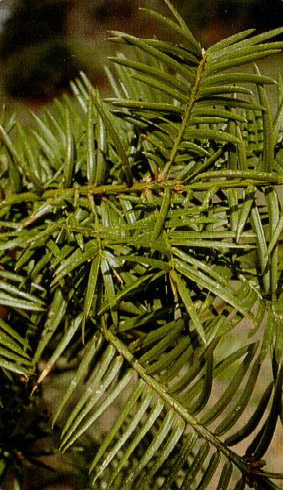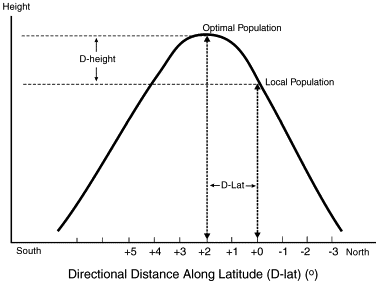As those that have followed the blog for awhile are aware, among my pet peeves are some of the naïve statements that are repeated ad nauseam by proponents of native plants for landscaping. You know the usual litany: natives don’t need water, don’t need fertilizer, resistant to insects, resistant to diseases, yada, yada… According to the dogma, native plants possess these traits because they’ve evolved here and they belong here. I hasten to point out; I have nothing against natives and think we ought to plant more of them whenever they are an appropriate choice. The problem, of course, with the typical native company line is that these statements are so obviously nonsensical they undermine the credibility of native plant advocates. Adaptations to resist environmental stress, for example, are a function natural selection and evolution. There are lots of droughty environments in the world; why should we assume that only local plants will be adapted to drought? Then there is the obvious problem of disturbed environments. Why should we assume that trees that have evolved in native woodlands will be good street trees? In fact, often they’re not.

Torryea taxifolia
But a new and potentially contentious argument is emerging in the ‘Is native better?’ discussion: Assisted migration. The basic premise of assisted migration (also referred to as assisted colonization) is that climate is changing faster than many organisms, especially long-lived organisms like trees, can evolve. Therefore to prevent species extinctions we should pro-actively move species (typically northward in the Northern hemisphere) so they will be in a better place as the world gets warmer. Sound far-fetched? Some of this is already occurring. In Florida a group called the Torreya Guardians has already taken it upon themselves to establish populations of a threatened conifer, Torreya taxifolia, in the southern Appalachians, outside of its native range in the panhandle of Florida. http://www.torreyaguardians.org/ In British Columbia, the provincial forest service is beginning to incorporate climate change scenarios into its tree improvement and development plans; trying to identify seed sources and species adapted to climates predicted throughout the 21st century.http://www.msnbc.msn.com/id/32012170/ns/us_news-environment/

Is local better? Foresters often see significant growth gains by moving seed sources northward. Will climate change increase this effect?
Clearly assisted migration is a controversial topic fraught with all kinds of uncertainties. Is climate really changing? How fast will it change? What about unintended consequences? Could the assisted species out-compete a local species that would’ve been OK otherwise? And then there are those who might wonder aloud about the hypocrisy of embracing species movements when they’re done by conservation biologists but not by horticulturists.
The “unintended consequences” bit is what stops me from saying this is a great idea. B
ut when I think about the likelihood of certain natives disappearing due to newly inhospitable conditions … Well, I’m all for survival of the fittest – until it means no more Sequoias, no more Bristlecones, no more sweet shrub or trillium, no more of the environments I love.
The Torreya was found in Florida’s panhandle in 1835, so it was there naturally. Yes, environments can change, but if folks wish to preserve what’s always been there and its ecosystem, I don’t have a problem with that.
The Torreya State Park celebrates both The Florida yew (Taxus floridana)and the Florida torreya (Torreya taxifolia) are similar species in the yew family (Taxaceae) and both are rare and endemic to this region. See my post on a field trip to this park: http://fnpsblog.blogspot.com/2010/12/field-trip-to-torreya-state-park-with.html
I find the tone of this anonymous post to be quite offensive. (And is “The Garden Professors” now allowing anonymous posts? Is that how we have an honest, constructive discussion?)
I am not a native plant purist. My garden is full of exotics along with natives. But I object to a sincere group of people having their views caricatured and then dismissed.
For instance, I don’t think there are any serious native plant advocates who claim that native plants “don’t need water.” They are more likely to say that they need less water (and other inputs) than many of the exotics commonly used today. I think they are aware that there are exotics that are also drought resistant, but would argue that there are other benefits to natives (support of a diverse insect population, for example).
Snide and offensive comments are not needed for a productive discussion of horticultural or any other issues. Like the man said, you can disagree without being disagreeable.
I agree with Jason in that when establishing landscape plantings it is important to recognize their potential for delivering a range of (often very subtle) ecological services. However, while I appreciate “native” plants, in many/most built landscape settings, the conditions (especially as they relate to soil physical characteristics) are far, far, far from “native.” In many of these situations, native plants thriving in an undeveloped property across the street, would quickly perish if planted in the developed site.
My apologies for neglecting to include my name on the original post (now corrected).
Jason, our goal is to stimulate thought and discussion. Sometimes we make some pointed comments though we certainly don’t intend to be offensive.
Having lived in the same area for 50 plus years and seen the change in our climate I agree that there is need to study this more! Are we in a normal or”natural” cycle of lower moisture or are we sliding into a drier climate? Will look up the records for our area and see what they say. Keep up the conversation!
Assisted migration, along with how to handle plants that have assisted their own migration northward into new areas (black locust, for example), is being discussed and debated at Chicago Wilderness gatherings.
No easy answers.
What a great, thought-provoking post. While it seems certain that climate is changing, I am under the impression that there are a number of questions regarding exactly how it will change in different regions over time. For example,while it may get progressively warmer going north (in the northern hemisphere), is it likely to get drier or more sub-tropical? There are arguments for both.
As for assisted migration of plants, there may be a “chicken or the egg” consequence; massive plantings can influence local weather, in the same way creating large reservoirs or denuding forests can.
And then there’s the ecosystem concern; how will introducing new species affect an area?
Personally, I don’t think there’s a way to stop “assisted migration” where human beings are involved–we’ve been changing the landscape since we existed, really.
Lots to think about!